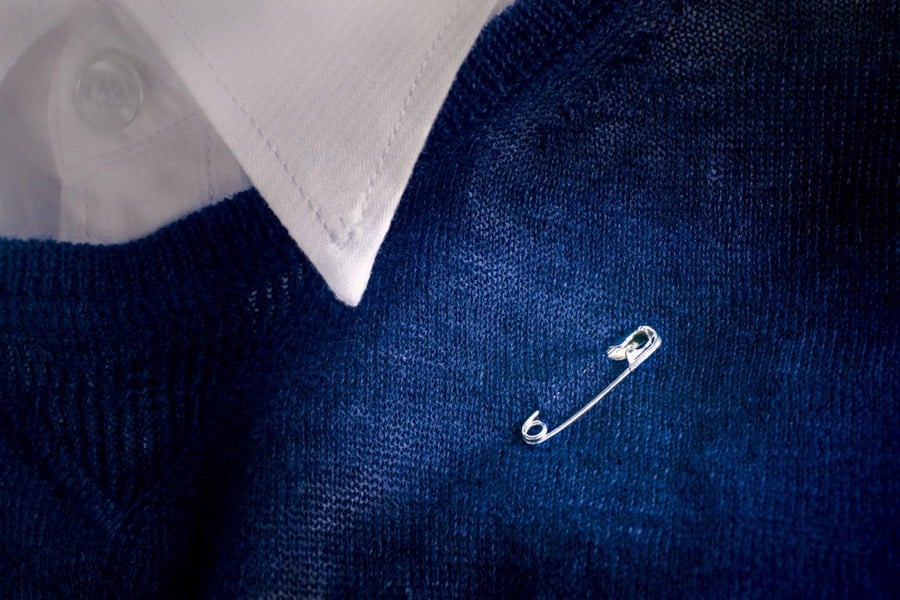Safety pins as a symbol of solidarity against racism

Post-Brexit, people in the UK started wearing safety pins to show their stance against racism and their solidarity with immigrants.
In response to the open environment of hatred, people across the U.K. are now wearing safety pins — and tweeting pictures of themselves wearing them — in an act of solidarity with immigrants.
In the wake of the election and reports of racism incidents across the nation, some are advocating using the safety pin strategy here too.
We need a symbol like that in the United States now. These are vicious days in America. The deplorables are emboldened. The Washington Post reports that there have already been two attacks on Muslim women on college campuses. At San Diego State University, two men ranting about Trump and Muslims robbed a student wearing hijab.
I like this idea, that a subtle marker can denote a social safe space of sorts, a signal to someone who might feel uncomfortable that an ally is nearby. That’s not to say you can put a pin on your coat and *dust off your hands, job well done* but it may help. I’m going to try it.
Update: During the Nazi occupation of Norway in World War II, Norwegians took to wearing paperclips to signal their rejection of Nazi ideology.
The people of Norway also had to deal with German soldiers day in and day out for five years. By 1945, some 400,000 German troops were operating in Norway, controlling the population of about 4 million people.
It was in the autumn of 1940 when students at Oslo University started wearing paperclips on their lapels as a non-violent symbol of resistance, unity, and national pride.
Symbols related to the royal family and state had already been banned, and they wanted a clever way of displaying their rejection of the Nazi ideology. In addition to wearing a single paperclip, paperclip bracelets and other types of jewellery were fashioned as well, symbolically binding Norwegians together in the face of such adversity.
Of course, once the Nazis got wind of this, wearing paperclips became a crime. (via @ckrub)
Update: That co-opting thing I warned against above? Seems like it’s happening.
wear safety pin to fool people into thinking you’re a safe space, trigger them
If I had to guess however, this behavior will be short lived and they’ll move on to some other genius scheme. I’m not taking my pin off. (via @_McFIy & @pattersar)
Update: There’s no safety pin emoji, but some people are adding the paperclip emoji to their Twitter usernames as a virtual world counterpart to the safety pin.





Stay Connected